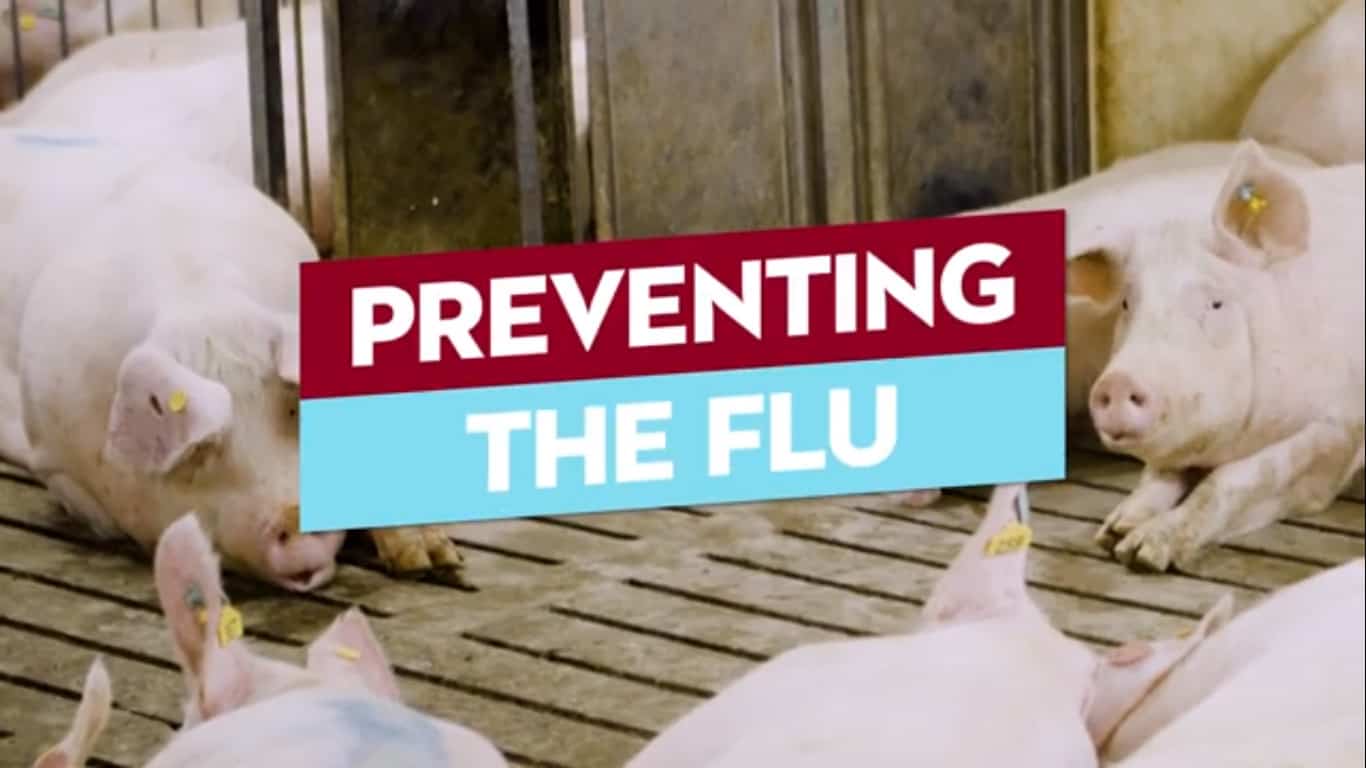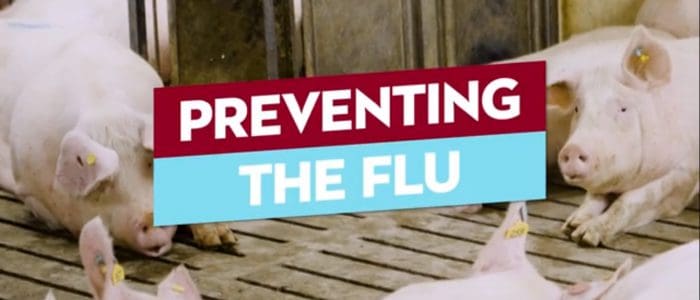- « Back to Database Search
-

-
Protecting Pigs and People from the Flu
-

-
Protecting Pigs and People from the Flu addresses the transmission of flu from humans to pigs and pigs to humans and the necessary precautionary steps to avoid spreading the virus. Virus transmission is most likely to occur where people and pigs are in close proximity – in swine barns, at exhibitions or fairs, or in slaughterhouses. Receiving a flu shot every year is an important step to reduce the chances of the virus spreading. Practice good hygiene by washing hands frequently and covering your nose and mouth when coughing or sneezing or wear a mask. Practice biosecurity measures to avoid transmitting the virus and contact a veterinarian if your pigs are showing symptoms of the flu.
This video is provided for informational and educational purposes only. The video contents are solely the responsibility of the authors and do not necessarily represent the views of CDC/NIOSH or any other funders.
- « Back to Database Search
-
Protecting Pigs and People from the Flu
-

-
Protecting Pigs and People from the Flu addresses the transmission of flu from humans to pigs and pigs to humans and the necessary precautionary steps to avoid spreading the virus. Virus transmission is most likely to occur where people and pigs are in close proximity – in swine barns, at exhibitions or fairs, or in slaughterhouses. Receiving a flu shot every year is an important step to reduce the chances of the virus spreading. Practice good hygiene by washing hands frequently and covering your nose and mouth when coughing or sneezing or wear a mask. Practice biosecurity measures to avoid transmitting the virus and contact a veterinarian if your pigs are showing symptoms of the flu.
This video is provided for informational and educational purposes only. The video contents are solely the responsibility of the authors and do not necessarily represent the views of CDC/NIOSH or any other funders.

